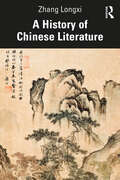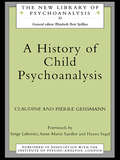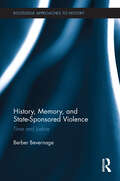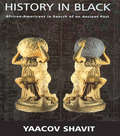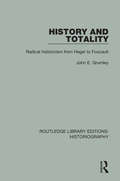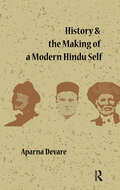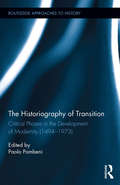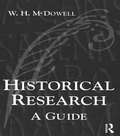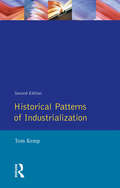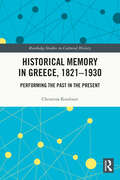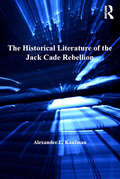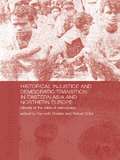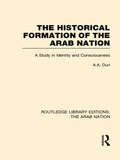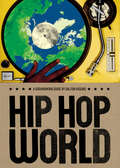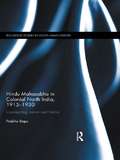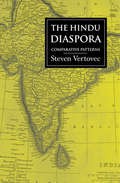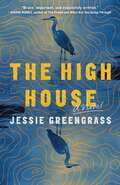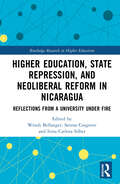Special Collections
Benetech’s Global Certified Accessible Titles
Description: Benetech’s GCA program is the first independent third-party EPUB certification to verify ebook accessibility. By creating content that is born accessible, publishers can meet the needs of all readers. Learn more: https://bornaccessible.benetech.org/
- Table View
- List View
A History of Chinese Literature
by Zhang LongxiZhang Longxi, an internationally renowned scholar of Chinese and comparative literature, is your guide to the three-millennia-long history of Chinese literature from the remote antiquity of oracle bones to contemporary works. Professor Zhang charts the development of the major literary forms in Chinese, including poetry, prose, song lyrics, and plays, and introduces the most famous poets and writers and their representative texts. Taking a period-based approach through the major dynasties, he places these forms, texts, and authors within their historical contexts and tells the fascinating story of Chinese literature with copious examples in English translation. He writes in a clear and accessible style and assumes no prior knowledge of Chinese history or Chinese literature. This book is an ideal introduction for students and the general readers who want to get a broad but thorough overview of Chinese literature in all its richness and diversity.
A History of Child Psychoanalysis
by the late Geissmann and Claudine GeissmannChild analysis has occupied a special place in the history of psychoanalysis because of the challenges it poses to practitioners and the clashes it has provoked among its advocates. Since the early days in Vienna under Sigmund Freud child psychoanalysts have tried to comprehend and make comprehensible to others the psychosomatic troubles of childhood and to adapt clinical and therapeutic approaches to all the stages of development of the baby, the child, the adolescent and the young adult. Claudine and Pierre Geissmann trace the history and development of child analysis over the last century and assess the contributions made by pioneers of the discipline, whose efforts to expand its theoretical foundations led to conflict between schools of thought, most notably to the rift between Anna Freud and Melanie Klein. Now taught and practised widely in Europe, the USA and South America, child and adolescent psychoanalysis is unique in the insight it gives into the psychological aspects of child development, and in the therapeutic benefits it can bring both to the child and its family.
History Of Bundling
by StilesFirst published in 2006. Routledge is an imprint of Taylor & Francis, an informa company.
History, Memory, and State-Sponsored Violence
by Berber BevernageModern historiography embraces the notion that time is irreversible, implying that the past should be imagined as something ‘absent’ or ‘distant.’ Victims of historical injustice, however, in contrast, often claim that the past got ‘stuck’ in the present and that it retains a haunting presence. History, Memory, and State-Sponsored Violence is centered around the provocative thesis that the way one deals with historical injustice and the ethics of history is strongly dependent on the way one conceives of historical time; that the concept of time traditionally used by historians is structurally more compatible with the perpetrators’ than the victims’ point of view. Demonstrating that the claim of victims about the continuing presence of the past should be taken seriously, instead of being treated as merely metaphorical, Berber Bevernage argues that a genuine understanding of the ‘irrevocable’ past demands a radical break with modern historical discourse and the concept of time. By embedding a profound philosophical reflection on the themes of historical time and historical discourse in a concrete series of case studies, this project transcends the traditional divide between ‘empirical’ historiography on the one hand and the so called ‘theoretical’ approaches to history on the other. It also breaks with the conventional ‘analytical’ philosophy of history that has been dominant during the last decades, raising a series of long-neglected ‘big questions’ about the historical condition – questions about historical time, the unity of history, and the ontological status of present and past –programmatically pleading for a new historical ethics.
History in Black
by Yaacov ShavitThe development of Afrocentric historical writing is explored in this study which traces this recording of history from the Hellenistic-Roman period to the 19th century. Afrocentric writers are depicted as searching for the unique primary source of "culture" from one period to the next. Such passing on of cultural traits from the "ancient model" from the classical period to the origin of culture in Egypt and Africa is shown as being a product purely of creative history.
History Education and Post-Conflict Reconciliation
by Karina V. Korostelina and Simone LässigThis book analyses the role of history education in conflict and post-conflict societies, describing common history textbook projects in Europe, the Balkans, the Caucasus, the Far East and the Middle East. Ever since the emergence of the modern school system and the implementation of compulsory education, textbooks have been seen as privileged media. The knowledge they convey is relatively persistent and moreover highly selective: every textbook author must choose and omit, condense, structure, reduce, and generalize information. Within this context, history textbooks are often at the centre of interest. There are unquestionably significant differences regarding homogeneity or plurality of interpretations when concepts of history education are compared internationally. This volume conducts a comparative analysis of common history projects in different countries and provides conceptual frameworks and methodological tools for enhancing the roles of these projects in the processes of conflict prevention and resolution. This book is timely, as issues of history education in conflict and post-conflict societies are becoming more popular with the increased realisation that unresolved disagreements about historical narratives can, and often do, lead to renewed conflict or even violence. This book will be of interest to students of peace studies and conflict resolution, political science, history, sociology, anthropology, social psychology, and international relations in general.
History and Totality
by John GrumleyIn this work, originally published in 1989, the author establishes a tradition of radical historicism from Hegel to the Budapenst School. He charts both its continuous evolution from the early 19th century to the late 20thh, and its transformation in the context of European social, economic and cultural change. Through a reappraisal of historical interpretation from Hegel to Foucault, the book demonstrates the contemporary relevance of radical historicism. It includes detailed analyses of Marx, Dilthey, Simmel, Weber, Lukácks, Horkheimer, Adorno and Habermas.
History and the Making of a Modern Hindu Self
by Aparna DevareTaking the contentious debates surrounding historical evidence and history writing between secularists and Hindu nationalists as a starting point, this book seeks to understand the origins of a growing historical consciousness in contemporary India, especially amongst Hindus. The broad question it poses is: Why has ‘history’ become such an important site of identity, conflict and self-definition amongst modern Hindus, especially when Hinduism is known to have been notoriously impervious to history? As modern ideas regarding notions of history came to India with colonialism, it turns to the colonial period as the ‘moment of encounter’ with such ideas. The book examines three distinct moments in the Hindu self through the lives and writings of lower-caste public figure Jotiba Phule, ‘moderate’ nationalist M. G. Ranade and Hindu nationalist V. D. Savarkar. Through a close reading of original writings, speeches and biographical material, it is demonstrated that these three individuals were engaged with a modern historical and rationalist approach. However, the same material is also used to argue that Phule and Ranade viewed religion as living, contemporaneous and capable of informing both their personal and political lives. Savarkar, the ‘explicitly Hindu’ leader, on the contrary, held Hindu practices and traditions in contempt, confining them to historical analysis while denying any role for religion as spirituality or morality in contemporary political life. While providing some historical context, this volume highlights the philosophical/ political ideas and actions of the three individuals discussed. It integrates aspects of their lives as central to understanding their politics.
The Historiography of Transition
by Paolo PombeniDefining a “historic transition” means understanding how the complex system of intellectual, social, and material structures formed that determined the transition from a certain “universe” to a “new universe,” where the old explanations were radically rethought. In this book, a group of historians with specializations ranging from the sixteenth to the twentieth centuries and across political, religious, and social fields, attempt a reinterpretation of “modernity” as the new “Axial Age.”
Histories of Sexuality
by Stephen Garton"First Published in 2004, Routledge is an imprint of Taylor & Francis, an informa company."
Historical Research
by Bill McdowellThis is the first practical guide to cover the various stages of a history research project, from the selection of the topic and the organization and interpretation of source material, through to the completion of the written-up record.Whether it is for a dissertation, thesis article or, indeed, full-length book, Historical Research deals with the purpose of research, and the implications, limitations and benefits of different research methods, as well as the effective presentation of the finished result.
Historical Patterns of Industrialization
by Tom KempIndustrialization is still the factor that distinguishes the modern world from the past, and advanced countries from undeveloped ones. In this revised and expanded edition, Tom Kemp uses the historical record of industrialization to explore key questions about its impact and the significance we assign to it. The book adopts a thematic approach to examine the roles of technology, banking, transport and the state; the fate of the peasantry in an industrializing society; and the changing features of industrial capitalism in the latter part of the 19th century. It features four contrasted case studies from outside Europe - India, Canada, Japan and, for the first time in this second edition, South Africa. It is aimed at 1st year University/Polytechnic students and is suitable for courses in economic history, social history, development studies, applied economics, international economics and area studies.
Historical Memory in Greece, 1821–1930
by Christina KoulouriThis book presents a social and cultural history of collective memory in modern Greece during the first century of state independence, contributing to the debate over the relationship between memory and identity. It discusses how modern Greek society commemorated its distant and recent pasts, both real and imagined, namely antiquity, Byzantium, the Greek Revolution and the Asia Minor Catastrophe; how cultural memory was shaped by the various war experiences (victory, defeat, mass death and mourning, refugeedom); and how memory politics became arenas of social and political strife. Historical painting, monuments, historical pageantry, tableaux vivants, national anniversaries, performances of ancient drama and revivals of ancient games are analyzed as instances where the past was visualized, represented, performed and "consumed". An explosion in public history has taken place over the last decades around the world, with a veritable flood of commemorations, anniversaries and "memory wars". As more and more social groups claim the "right to remember", public discourse and polemics have arisen at the same time that traumatic memory has become a field of international academic research. In the arena of public history, historical memory is being constructed through the sentimental, irrational reception of mythological narratives told through images.
The Historical Literature of the Jack Cade Rebellion
by Alexander L. KaufmanAccounts of Jack Cade's 1450 Rebellion-an uprising of some 30,000 middle-class citizens, protesting Henry VI's policies, and resulting in hundreds of deaths as well as the leaders' execution-form the dominant entry in a group of quasi-historical documents referred to as the London chronicles of the Fifteenth Century. However, each chronicle is inherently different and highly subjective. In the first study of the primary documents related to the Cade Rebellion, Alexander L. Kaufman shows that the chroniclers produced multiple representations of the event rather than a single, unified narrative. Aided by contemporary theories of historiography and historical representation, Kaufman scrutinizes the differing representations and distinguishes the writers' objectiveness, their underrated literary skills, and their ideological positions on the rebellion and fifteenth-century politics. He demonstrates how the use of figurative language is related to writing about trauma, and how descriptions of Cade's procession through London are a violent parody of midsummer festivals. In an exploration of authenticity in the descriptions of Cade, Kaufman also examines the characterization and plot devices that push Cade towards the realm of myth, showing that representations of Cade are influenced by popular fifteenth-century stories of Robin Hood.
Historical Injustice and Democratic Transition in Eastern Asia and Northern Europe
by Robert Cribb and Kenneth ChristieThe memory of past atrocity lingers like a ghost at the table of democracy. Injustices carried out in the past - from massacres and murder to repression and detention - embitter societies and distort their structures so that the process of establishing and running a democracy carries an extra burden. This volume examines societies at various stages of dealing with the memory of the past, from China, Mongolia, Indonesia and the Baltic States, where bitter memories of death and persecution still intrude, to Finland, where the civil war of 1918 has finally been accepted as a distant national tragedy.
The Historical Formation of the Arab Nation
by A A DuriThis book is a comprehensive examination of the historical process of social formation that gave rise to the communal consciousness of the Arab nation and determined its sense of identity. It aims to provide a historical context for the assessment of prevailing concepts and suggests hypotheses for the development of modern Arab consciousness. The book firstly traces Arab origins and the formation of Arab societies after the emergence of Islam, assessing the perspectives and factors that shaped the rise of the Arab nation in both practical and intellectual terms. It then examines the beginning of the Arab awakening and the course of its development in the latter half of the nineteenth century and the first two decades of the twentieth, focusing on the emergence of a nationalist perspective in the development of intellectual positions on patriotism and Arabism.
Hip Hop World
by Dalton HigginsA fascinating look at hip hop, the world’s most popular music, and what it means to young people all over the globe, written by an acclaimed pop-culture critic. An excellent introduction to hip hop for young adults. Hip hop is arguably the predominant global youth subculture of this generation. In this book Dalton Higgins takes vivid snapshots of the hip hop scenes in Europe, North America, Asia, Africa and more. American hip hop has gone through growing pains, and is questioned for being too commercialized to articulate the hopes, concerns and dreams of marginal youth and community members. Outside the US, hip hop culture is often a political tool to mobilize disenfranchised communities around hard issues, with little support from mainstream corporations or sponsors. Higgins taps into his own powers of pop culture prognostication to predict the future of the genre and the youth culture that spawned it, as hip hop spreads its tentacles to the furthest reaches of humanity. "[The Groundwork Guides] are excellent books, mandatory for school libraries and the increasing body of young people prepared to take ownership of the situations and problems previous generations have left them." — Globe and Mail Correlates to the Common Core State Standards in English Language Arts: CCSS.ELA-LITERACY.RI.6.1 Cite textual evidence to support analysis of what the text says explicitly as well as inferences drawn from the text. CCSS.ELA-LITERACY.RI.6.2 Determine a central idea of a text and how it is conveyed through particular details; provide a summary of the text distinct from personal opinions or judgments. CCSS.ELA-LITERACY.RI.6.3 Analyze in detail how a key individual, event, or idea is introduced, illustrated, and elaborated in a text (e.g., through examples or anecdotes). CCSS.ELA-LITERACY.RI.6.6 Determine an author's point of view or purpose in a text and explain how it is conveyed in the text.
Hindu Mahasabha in Colonial North India, 1915-1930
by Prabhu BapuHindu nationalism has emerged as a political ideology represented by the Hindu Mahasabha. This book explores the campaign for Hindu unity and organisation in the context of the Hindu-Muslim conflict in colonial north India in the early twentieth century. It argues that India's partition in 1947 was a result of the campaign and politics of the Hindu rightwing rather than the Islamist politics of the Muslim League alone. The book explains that the Mahasabha articulated Hindu nationalist ideology as a means of constructing a distinct Hindu political identity and unity among the Hindus in conflict with the Muslims in the country. It looks at the Mahasabha’s ambivalence with the Indian National Congress due to an extreme ideological opposition, and goes on to argue that the Mahasabha had its ideological focus on an anti-Muslim antagonism rather than the anti-British struggle for India’s independence, adding to the difficulties in the negotiations on Hindu-Muslim representation in the country. The book suggests that the Mahasabha had a limited class and regional base and was unable to generate much in the way of a mass movement of its own, but developed a quasi-military wing, besides its involvement in a number of popular campaigns. Bridging the gap in Indian historiography by focusing on the development and evolution of Hindu nationalism in its formative period, this book is a useful study for students and scholars of Asian Studies and Political History.
The Hindu Diaspora
by Steven VertovecHinduism outside the Indian subcontinent represents a contrasting and scattered community. From Britain to the Caribbean, diasporic Hindus have substantially reformed their beliefs and practices in accordance with their historical and social circumstances. In this theoretically innovative analysis Steven Vertovec examines:* the historical construction of the category 'Hinduism in India'* the formation of a distinctive Caribbean Hindu culture during the nineteenth century* the role of youth groups in forging new identities during Trinidad's Hindu Renaissance* the reproduction of regionally based identities and frictions in Britain's Hindu communities* the differences in temple use across the diaspora.This book provides a rich and fascinating view of the Hindu diaspora in the past, present and its possible futures.
Hilary Putnam
by Maximilian De GaynesfordPutnam is one of the most influential philosophers of recent times, and his authority stretches far beyond the confines of the discipline. However, there is a considerable challenge in presenting his work both accurately and accessibly. This is due to the width and diversity of his published writings and to his frequent spells of radical re-thinking. But if we are to understand how and why philosophy is developing as it is, we need to attend to Putnam's whole career. He has had a dramatic influence on theories of meaning, semantic content, and the nature of mental phenomena, on interpretations of quantum mechanics, theory-change, logic and mathematics, and on what shape we should desire for future philosophy. By presenting the whole of his career within its historical context, de Gaynesford discovers a basic unity in his work, achieved through repeated engagements with a small set of hard problems. By foregrounding this integrity, the book offers an account of his philosophy that is both true to Putnam and helpful to readers of his work.
High-Stakes Testing
by R. Murray ThomasThe federal government's No Child Left Behind Act has thrust high-stakes testing - its goals, methods, and consequences - into the educational limelight. The four-fold purpose of this book is to: describe the nature of high-stakes testing; identify types of collateral damage that have attended the testing programs; analyze methods different groups of people have chosen for coping with the damage and suggest lessons to be learned from the high-stakes-testing experience. The six groups of people whose coping strategies are inspected include: politicians and their staffs; educational administrators and their staffs; parents and the public; test makers and test administrators; teachers and students. Importantly, the author avoids aligning himself with the test-bashing rhetoric of those who oppose high-stakes testing, especially the No Child Left Behind Act.Key features of this outstanding new book include: illustrative cases. The book offers more than 350 cases of collateral damage from high-stakes testing--and people's coping strategies--as reported in newspapers over the 2002-2004 period. background perspectives. Part I examines the influence of high-stakes testing on: 1) what schools teach; 2) how student progress is evaluated; 3) how achievement standards are set; and 4) how test results are used. participant responses. Part II, which is the heart of the book, devotes a separate chapter to the coping strategies of each of the major participants in the high-stakes testing movement: politicians and their staffs, educational administrators and their staffs, parents and the public, test-makers and test-givers, teachers, and students. summary chapter. The last chapter (Lessons to Learn) offers suggestions for minimizing collateral damage by adopting alternative approaches not used in the creation of our current high-stakes testing programs, particularly the federal government's No Child Left Behind Act. This book is appropriate for any of the following audiences: students taking evaluation or administration courses in schools of education, inservice administrators and teachers, policy makers, and those members of the general public who are concerned about the fate of schooling in America.
The High House
by Jessie GreengrassShortlisted for the 2021 Costa Novel Award In this powerful, highly anticipated novel from an award-winning author, four people attempt to make a home in the midst of environmental disaster.Perched on a sloping hill, set away from a small town by the sea, the High House has a tide pool and a mill, a vegetable garden, and, most importantly, a barn full of supplies. Caro, Pauly, Sally, and Grandy are safe, so far, from the rising water that threatens to destroy the town and that has, perhaps, already destroyed everything else. But for how long? Caro and her younger half-brother, Pauly, arrive at the High House after her father and stepmother fall victim to a faraway climate disaster—but not before they call and urge Caro to leave London. In their new home, a converted summer house cared for by Grandy and his granddaughter, Sally, the two pairs learn to live together. Yet there are limits to their safety, limits to the supplies, limits to what Grandy—the former village caretaker, a man who knows how to do everything—can teach them as his health fails. A searing novel that takes on parenthood, sacrifice, love, and survival under the threat of extinction, The High House is a stunning, emotionally precise novel about what can be salvaged at the end of the world.
High Hopes
by Stanley A. RenshonNow in paperback, this perceptive psychological portrait of Clinton and his presidency investigates whether Clinton has demonstrated the necessary qualities of judgment, vision, character and skill, as well as his ambition and extreme self-confidence. Renshon traces the development of Clinton's character from his early family experiences to his adolescence and long political career, including the controversy surrounding Clinton's draft-dodging and marriage.
Higher Education, State Repression, and Neoliberal Reform in Nicaragua
by Serena Cosgrove and Wendi Bellanger and Irina Carlota SilberThis innovative volume makes a key contribution to debates around the role of the university as a space of resistance by highlighting the liberatory practices undertaken to oppose dual pressures of state repression and neoliberal reform at the Universidad Centroamericana (UCA) in Nicaragua. Using a critical ethnographic approach to frame the experiences of faculty and students through vignettes, chapters present contextualized, analytical contributions from students, scholars, and university leaders to draw attention to the activism present within teaching, research, and administration while simultaneously calling attention to critical higher education and international solidarity as crucial means of maintaining academic freedom, university autonomy, oppositional knowledge production, and social outreach in higher education globally. This text will benefit researchers, students, and academics in the fields of higher education, educational policy and politics, and international and comparative education. Those interested in equality and human rights, Central America, and the themes of revolution and protest more broadly will also benefit from this volume.
Higher Education in Liquid Modernity
by Marvin OxenhamBased in sociologist Zygmunt Bauman’s theory of liquid modernity, this volume describes and critiques key aspects and practices of liquid education--education as market-driven consumption, short life span of useful knowledge, overabundance of information--through a systematic comparison with ancient Greek paideia and medieval university education, producing a sweeping analysis of the history and philosophy ofeducation for the purpose of understanding current higher education, positing a more holisitic alternative model in which students are embedded in a learning commutity that is itself embedded in a larger society. If liquid modernity has left a vacuum where, according to Bauman, the pilot’s cabin is empty, this volume argues that no structure is better positioned to fill this vacuum than the university and outlines a renewed vision of social transformation through higher education.
